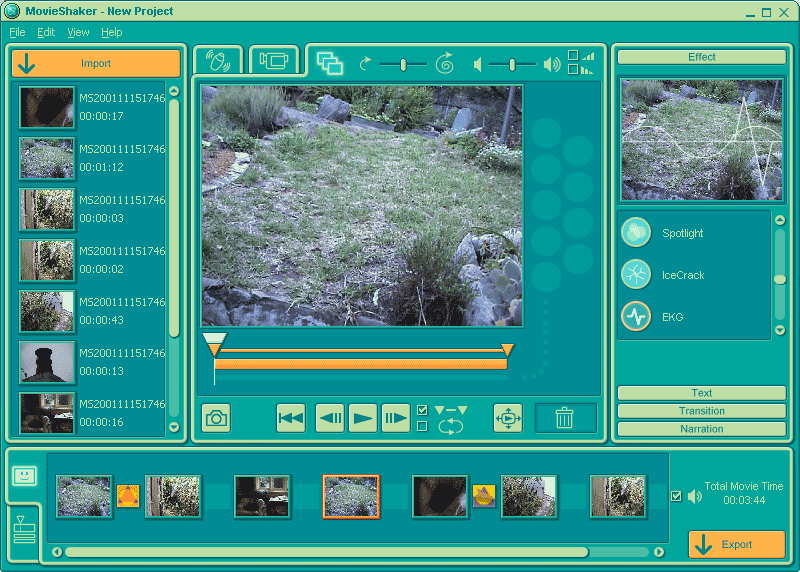

Expand Contrast Function Performs expansion of the histogram, on the 16-bit data (48 bit RGB) of accumulated frames, centered on each color channel's mean value. Significantly enhances low light and low contrast images through better distribution of contrast. Only 2 accumulated frames are necessary to achieve greater than 8-bit precision. Histogram Equalization Performs histogram equalization on the 16-bit data (48-bit RGB) of accumulated frames. Increases the sensitivity of the camera up to 10x (from 3 lux to 0.3 lux). Reduces the noise in low-light, low signal images. The rate of S/N is calculated by taking the square root of the number of frames captured (i.e. Increases the Signal-to-Noise Ratio in low-light images, by up to 16x with no loss of definition (up to the camera's rated maximum of 52 dB).
#Mgi photosuite 8.05 free download software#
What are the advantages of the Enhanced Image Processing Engine? Frame Averaging Captures from 1 to 256 frames, at any image resolution accumulates the unprocessed/uncompressed pixel data in software and averages the accumulated pixel data by the number of frames captured.
 What about technical support and warranty?. How does the Pixera 120es compare against other "mega-pixel" and 3-CCD cameras?. How does the Pixera 120es compare against "cooled CCD" cameras?. Is the 120es Application Suite available for the Professional?. How do you mount the Pixera 120es onto a microscope?. What are the computer system requirements for the Pixera 120es?. What operating systems are supported by the Pixera 120es?. What type of performance is typical for the Pixera 120es?. What about exposure, shutter speeds and maximum exposure time?. What is the sensitivity of the Pixera 120es?. What is the signal-to-noise (S/N) ratio of the Pixera 120es?. What are the image sensor specifications for the Pixera 120es?. What applications are in the Pixera 120es Application Suite?. In general, what are some of the tips and techniques to know in order to take advantage of the frame averaging and histogram functions?. Is the Pixera 120es sensitive enough to do fluorescence?. Is any software included with the Pixera 120es?. What microscopy illumination techniques are suitable for the 120es?. What microscopy applications was the 120es designed for?. What are the advantages of the Enhanced Image Processing Engine?. What are the new features of the Pixera 120es?. Do Pixera DiRactor™-based digital camera systems interpolate or "double" pixels to gain resolution?. How does Pixera's DiRactor™ technology achieve 4x the actual image sensor resolution?.
What about technical support and warranty?. How does the Pixera 120es compare against other "mega-pixel" and 3-CCD cameras?. How does the Pixera 120es compare against "cooled CCD" cameras?. Is the 120es Application Suite available for the Professional?. How do you mount the Pixera 120es onto a microscope?. What are the computer system requirements for the Pixera 120es?. What operating systems are supported by the Pixera 120es?. What type of performance is typical for the Pixera 120es?. What about exposure, shutter speeds and maximum exposure time?. What is the sensitivity of the Pixera 120es?. What is the signal-to-noise (S/N) ratio of the Pixera 120es?. What are the image sensor specifications for the Pixera 120es?. What applications are in the Pixera 120es Application Suite?. In general, what are some of the tips and techniques to know in order to take advantage of the frame averaging and histogram functions?. Is the Pixera 120es sensitive enough to do fluorescence?. Is any software included with the Pixera 120es?. What microscopy illumination techniques are suitable for the 120es?. What microscopy applications was the 120es designed for?. What are the advantages of the Enhanced Image Processing Engine?. What are the new features of the Pixera 120es?. Do Pixera DiRactor™-based digital camera systems interpolate or "double" pixels to gain resolution?. How does Pixera's DiRactor™ technology achieve 4x the actual image sensor resolution?. 
How is the Pixera 120es different from the Pixera Professional?.Click on the questions below to view their answers.







 0 kommentar(er)
0 kommentar(er)
